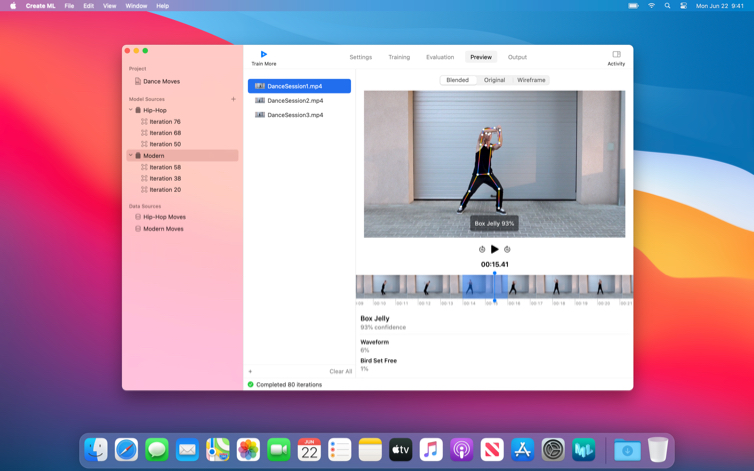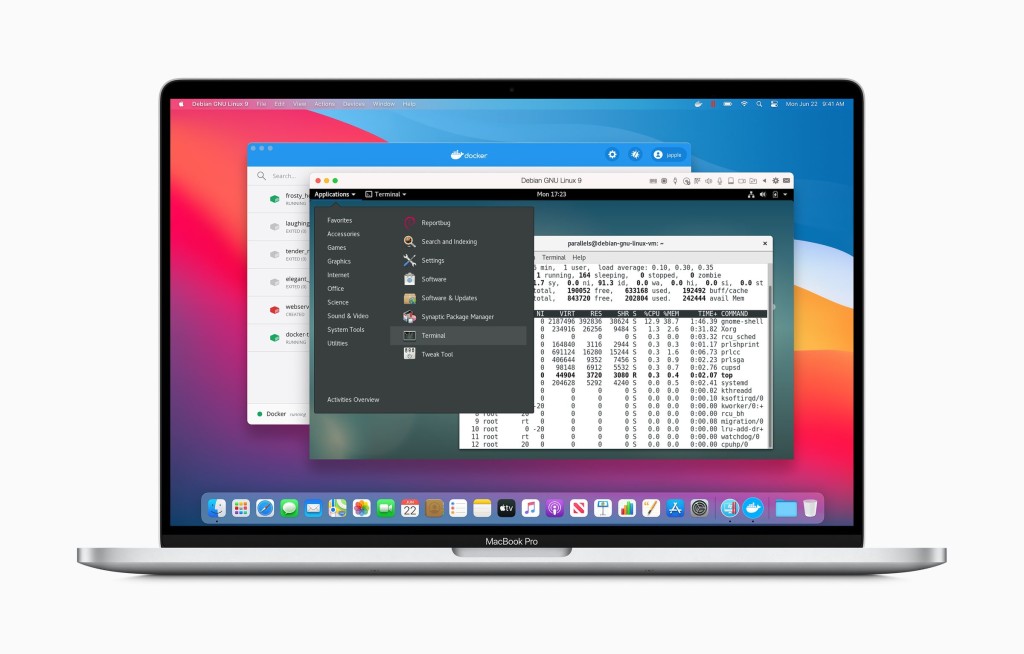Apple’s announcement of moving the Mac from Intel to ARM is no surprise. But here are the details most relevant to your tools – and why we’re in a new era on both the PC and the Mac.
And TL:DR – the change on the Mac platform has a lot to do with Apple’s App Store ecosystem and blending the iPad and Mac platforms. But looking at the big picture, we aren’t so much post-PC as post-Intel. All vendors, not just Apple, are starting to eye chips other than Intel’s even on the x64 architecture.
But back to California and Apple. Apple Silicon – aka Apple’s own systems-on-chip – will power the next generation of Macs. That means Apple will have a single unified hardware architecture that they themselves manufacture, running for both macOS and iOS.
Developers can get low-spec Mac mini-based hardware to get ready, with some units shipping this week – though I expect demand will be high and that hardware may be hard to get.
There’s two components here – a new OS (macOS Big Sur) plus new Apple-based hardware, replacing the Intel. But some key takeaways:
There’s a $500 starter kit. If you have an Apple Developer Program membership, you can apply for the Universal App Quick Start Program. (Whew!) What’s included:
macOS Big Sur beta
xcode 12 beta
Apple hardware you have to return – the DTK: Mac mini, Apple A12Z Bionic, 16GB memory, 512GB SSD, and “a variety of ports”
But you have to apply, I couldn’t find all the restrictions and you do have to mail back that mini hardware. See developer.apple.com
It’s CPU + GPU + machine learning. Apple’s architecture includes all three – general-purpose computation, graphics computation, and AI-optimized computation for deep convolutional neural networks. Of course, that also means locking into Apple’s performance, which may be better for battery life and computation power, as Apple promises – or not.
You existing stuff might run without modification. There will be Rosetta for Intel. This was a big point of speculation. Apple claims that you will be able to run your existing Intel apps by installing on the new system, and letting the installer convert to ARM. We’ll have to see how that works out in practice. It’s called “Rosetta 2” – the original Rosetta being the compatibility layer with Intel apps, though that worked differently.
That isn’t true of all copy protection schemes, though. And prepare to find new drivers, because drivers also need to be built for ARM. And… well, we have to actually test this.

You can run iOS apps. iPhone and iPad apps will run natively on the Mac now. That’s an expected transition – Apple has been readying their APIs for years – but it’s still a big deal. Now in music, I think the challenge will be whether that erodes the price point of desktop apps and plug-ins. Music app developers specifically tend to have smaller user bases and benefited from the price points on the desktop.
On the other hand, for iPad app makers especially, this is great news, as it expands the utility of those purchases. And that could in turn better support music apps with higher prices (like the $30-50 range, for example, instead of the $3 stuff).
Those iOS apps will show up in the Mac App Store.
Because of the difference between mouse and touch interfaces, and these different price points and ecosystems, and the demand for plug-ins and so on, and the fact that on desktop tons of users are on Windows (and a growing number even on Linux), I expect that for the most part desktop and mobile development will remain separate, but related.
Oh yeah, and –
AUv3 plug-ins on the Mac? Yes, it’s possible that Audio Unit plug-ins for iOS would now install across to the Mac automatically. I’m unclear on how this will work.
It could also frustrate desktop plug-in developers, who would then have to compete with iOS plug-ins at a lower price point. That isn’t to say those plug-in developers are greedy, either. Higher prices mean you can afford to sell fewer plug-ins – which means you can target more niche use cases, spend more time on development, and spend less time on support. That matters to small, independent devs in particular, some of whom are just one-person shops. But we’ll see.
It’ll take about two years. Apple is still planning more Intel Macs. The first ARM-based Macs won’t even ship until later this year for consumers. Apple says a “two year transition.” I’d say that’s itself telling; Apple loves to over-promise the ease of these sorts of transitions, especially from the perspective of those of us in music software, which is specifically more complex. So … two years for Apple to move their machines over does not necessarily translate to when you’d want to transition if you’re a Mac user. We’ll see. (Apple also didn’t indicate when they’ll drop support for Intel Macs.)
Yes, more machine learning. Interestingly, some readers scoffed when I said last week that I thought machine learning APIs would be a selling point on the Mac and on the new Mac Silicon. But of course it is – because this was an easy prediction to make. (That’ll be just human prediction, not AI-assisted.)

There’s still a lot we don’t know. Mac music developers are still struggling with Apple’s plug-in changes from macOS Catalina, and now they’re being asked to support a whole new architecture. That may not bother Apple’s Logic team, but it could be a major headache for everyone else.
What about copy protection? What about Audio Unit support? What will real world performance be like in different use cases, not just the ones Apple chose to demo? There are loads of questions here that could hold back the pro market. Some we don’t even know to ask yet.

Not post-PC. But post-Intel? Maybe the easier prediction is this – whether you’re on Mac or Windows, the future is looking less like Intel. AMD’s Ryzen platform is blazingly fast – and actually it could be one reason PC users aren’t talking about abandoning x64. (Existing software runs on the Ryzen just as easily as on Intel – no switch like the one Apple requires here.)
Even on Windows, readiness for ARM mobile platforms has been about a decade in the making. On Linux, it’s even easier to swap to ARM.
Intel’s disappointing processor performance then starts to look like a deal-killer. Though I do tend to favor the Windows- or Linux-based PC approach for advanced creative tools. These OSes won’t make you choose. AMD’s x64 chips out-perform ARM and Intel? No problem, run that. Intel surprises us and leapfrogs AMD again? (It’s happened before.) Back to Intel. ARM is what you want? That’s an option, too.
Apple’s focus, though, means at least the promise that the Mac ARM transition could be seamless. And Apple has a real ace in the hole by letting developers target both iOS and macOS at the same time, with the same tools. So I think the ball is back in the court of the PC ecosystem to make its own cross-architecture experience a positive one for developers.
Lock-in blues? Thanks to COVID-19 and social distancing, we can’t listen in on a crowded room full of developers to hear what’s getting cheers, and what’s getting – crickets. In some ways, that may be itself the most notable juxtaposition of today. (Check Twitter, then?)
But this is a big ask from Apple at a tough time. The company has angered developers as it publicly humiliated one of them and pushes back on European regulatory reforms. So I think developers, even if they’re really enthusiastic about this new architecture’s future, will also have at the back of their mind some reservations about whether Apple will take a bite out of them. Previously:
And one more thing…
Will Apple cede use cases to the PC? The flipside of this is that Apple will now battle additional pressure to be seen as a pro platform. Now the days of saying the Mac is more and more like an iPad are literally backed up by the underlying Mac architecture being almost indistinguishable from the iPad.
And I’m skeptical. There’s a danger that Apple’s focus on system-on-a-chip will leave it making basically iPads with keyboards and mice, but lacking advanced computational powers that high-end PC architectures have. Just seeing one demo of Final Cut Pro X isn’t yet enough to convince anyone otherwise. We’ll know when we look back on this moment, years later.
But architectures aside, expect this to be mostly seamless. The main thing here is, whatever the architecture underneath, the user may not care. Apple will focus on its custom silicon; the PC ecosystem will focus on diversity. ARM or Intel / x64 – or GPU, or dedicated co-processor (as for machine learning) – users will choose whatever gives them the best price/performance, and developers will make sure their stuff runs.
The fact that there isn’t too much in the way of earth-shaking news here today is a good thing. It’s up to hardware vendors – Apple being one of them – to deliver good platforms. Creative app makers will prove whether or not we want to look at that screen and use software, and in that sense, nothing changes.
Just one editorial note on Big Sur, and it’s this: